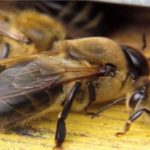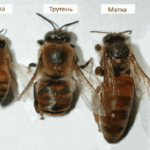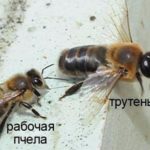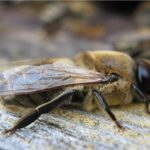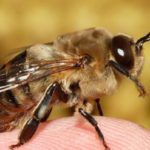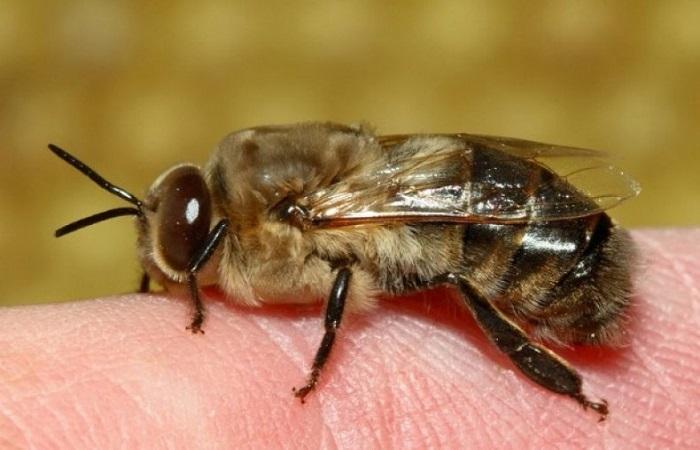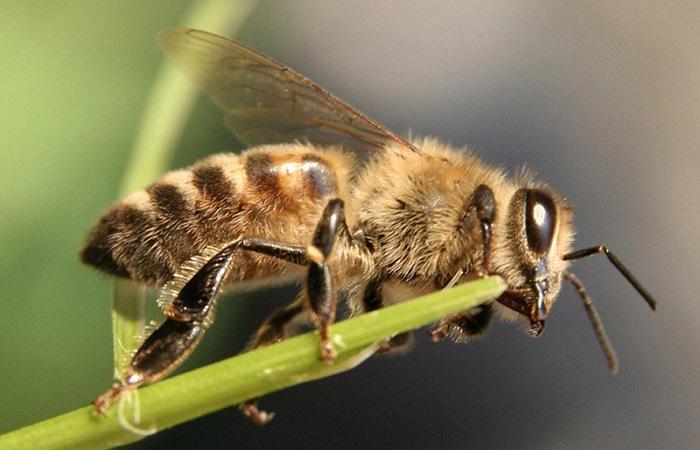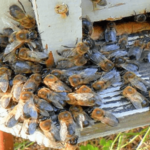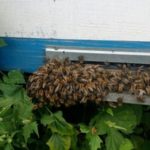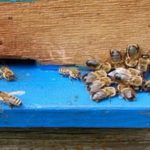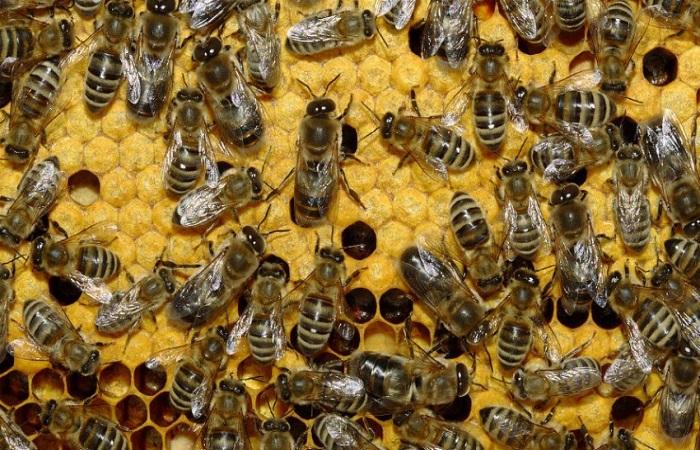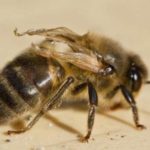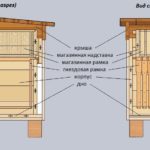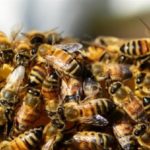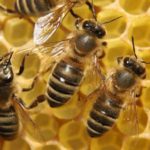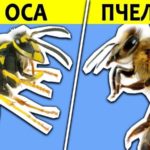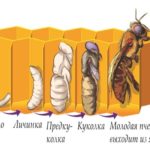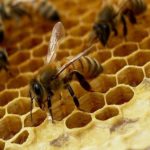Beekeeping manuals can tell you what a drone bee is. Let us examine the features and properties of male honey bees in more detail. Drones emerge from unfertilized eggs. Such eggs remain after sowing due to the queen bee - she cannot release sperm to fertilize the treasure. This happens if the cells built by worker bees are larger in size than necessary.
Appearance
Male bees appear from late spring to late summer.Overwintering of drones is a rather rare occurrence - they can be seen inside the hive in winter only if problems have arisen in the bee colony.
After hatching, individuals usually gain strength and then go for a walk. They look much larger and larger than normal bees. This is due to the fact that for 10 days after hatching they feed heavily, so that they can then be strong and hardy for several months.
Description:
- large body;
- weight reaches 250 milligrams;
- wings are well developed;
- good sense of smell, vision, hearing.
However, drones do not have the following organs:
- sting;
- wax glands;
- proboscis.
The absence of the listed organs means that insects cannot take care of themselves on their own - this is their main difference from working individuals. Drones need to be fed - this happens throughout the summer months, while the bee colony needs them.
Drones belong to the category of voracious insects. 1 kg of these individuals consumes up to 20 kg of honey. This is much more than is required for worker bees. In addition, royal jelly, honey and beebread are used to feed drone larvae.
During the flight, the males buzz loudly and descend to the surface with loud sounds, as if they were falling.
Characteristic
First of all, the drone is a male. The insect exists only to fertilize the queen. If intercourse is successful, the drones die.
Individuals can be distinguished by color: for example, Caucasian breeds have a black body, and breeds bred by Italians are often red in color. Outbred drones have a gray body tint.
Life cycle
Essentially, a drone is a male bee. Its life cycle looks like this:
- egg laying;
- hatching of the larva, which the worker bees feed with royal jelly, beebread and honey;
- sealing in a cell (in this case, the cell can be identified from afar - it stands out compared to others, since the drone larva is initially large in size);
- the next stage is removal from the cell;
- then the individual feeds heavily for 10 days;
- 7 days after hatching, the insect makes a flight;
- Already 14 days after birth, the drone is ready to fly around.
The queen is fertilized by 6 to 8 bees, so after successful fertilization the males die. Inside other hives, drones are also accepted while they are full of sperm. There they are fed, counting on services.
When the last honey harvest takes place, the males are no longer welcome. Worker bees begin to force them out of honey in order to conserve supplies.
The drone can survive the winter only if the queen of the bee colony remains unfertilized. The presence of male insects inside the hive in winter indicates that the family is going through an unfavorable period. Deadlines are shifted, production is stopped. The drone that has survived the winter approaches the next season weakened and unhealthy.
Significance in the bee family
What task do drones face if they cannot feed themselves - this is fertilization. To accomplish this task, insects need to be strong and resilient. They have to fly long distances in search of the queen. Nature has decreed that males can fertilize not only the queen that came out of the same hive, but also a completely foreign one.
In addition, males often fight among themselves for a female if they find her at the same time. During these battles, the strongest win, and the weak are forced to fly away to heal their wounds.
Outside the hive
It is interesting that the drones in the bee colony do not pay attention to the queen, but as soon as she flies outside, they immediately fly after her to accompany her. If they manage to catch up with the female, they mate in flight. The first intercourse may not bring results, but if the spermatic receptacle of the uterus is full, then it compresses the chamber, breaking off the male’s mating organ. Thus, it turns out that the male dies, and the female falls to the ground with him. After this, the queen rises and flies into the hive. Thus, the male who fertilized the female last dies.
In addition, once a season, males fly far from the hive to find females from other distant hives. This is necessary in order to exclude relatedness of offspring between females and males from the same family. Fertilization of one queen by several insects leads to mixing of genetic material, which means it contributes to the production of healthier offspring.
Role in the hive
Drones can also be useful inside a hive. According to the latest data from beekeepers, it turned out that flying males are able to push worker bees to work. This property is psychological in nature.
If drones remain for the winter, they are suitable for heating. They huddle together and cover the brood with their bodies, thereby providing warmth. This looks like a sacrifice for the sake of the future family, so it is wrong to consider drones only suitable for reproduction.
Males are important to every bee colony at different stages of development. These are the same worker bees, but with different tasks. Males do the work of inseminating the uterus, that is, they are responsible for future offspring. The healthier and more efficient the individuals and queens are, the better the future looks for a particular bee colony.
Interesting Facts
A lot of interesting facts have been collected about bee families:
- the most honey is collected in Siberia;
- worker bees see poorly, but drones have maximum vision - they need it at the stage when they are tracking the queen;
- bee colonies increase 2-3 times over the summer;
- The males' acute sense of smell allows them to smell the queen at a distance of up to 1 kilometer.

